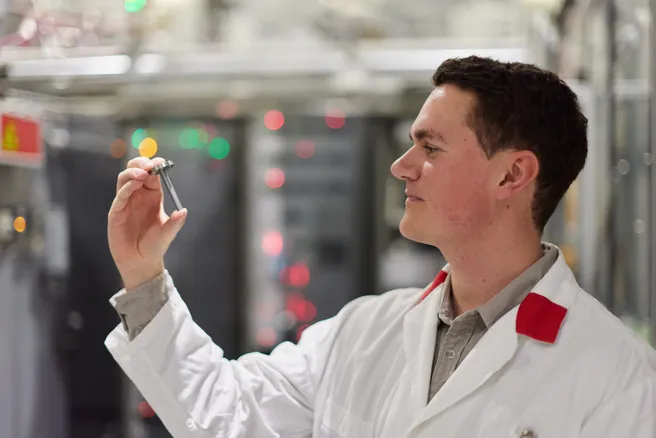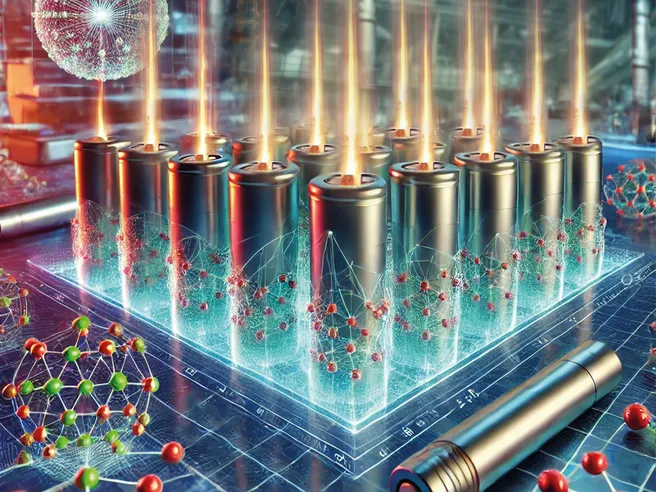The thermal stability of lithiated graphite has been identified as a crucial factor affecting efficiency in LIBs, particularly during fast charging or high discharge rates. Both low and high temperatures induce changes in the behaviour of graphite that impact the overall lifespan and safety of LIBs.
Low-temperature stability
At temperatures below -33°C, no substantial degradation of lithiated graphite was observed. Minor changes in diffraction intensities and the appearance of additional reflections from frozen electrolyte components were detected during in-situ characterisations. However, these changes did not impact the structural stability of the graphite, but did hinder the Li-ion diffusion during operation at low temperatures.
In contrast, overheating the Li intercalated graphite anode leads to irreversible structural changes occurring across the full range of states of charge. Dr. Anatoliy Senyshyn, instrument responsible of the neutron powder diffractometer SPODI at the MLZ and coordinator of this study, says: “The recorded diffraction patterns unambiguously indicate the formation of various side products upon heating, resulting in the loss of active lithium and harming stable cell operation.”
Side reactions at high temperatures
Calorimetric studies further identified the involvement of the binder and electrolyte residues in the degradation process, which result in the formation of passivation layers on the graphite particle surfaces. Stabilizing the electrolyte composition could help mitigate these effects and improve overall battery longevity.
Scientific publication
T. Hölderle, M. Monchak, P. Müller-Buschbaum, A. Senyshyn, et al. Thermal Structural Behaviour of Electrochemically Lithiated Graphite (LixC6) Anodes in Li-ion Batteries. Batteries & Supercaps (2024). https://doi.org/10.1002/batt.202300499
More information and links
- Forschungs-Neutronenquelle Heinz Maier-Leibnitz (FRM II) https://www.frm2.tum.de/en/frm2/home/
- Prof. Peter Müller-Buschbaum's research group Functional Materials: https://www.ph.nat.tum.de/en/functmat/peter-mueller-buschbaum/
Experiments were carried out at P02.1 (PETRA III / DESY), SNBL (ESRF) and SPODI (MLZ).
Original article: https://mlz-garching.de/englisch/news-und-press/news-articles/wie-waerme-lithium-ionen-batterien-schaedigt.html?back=yes

